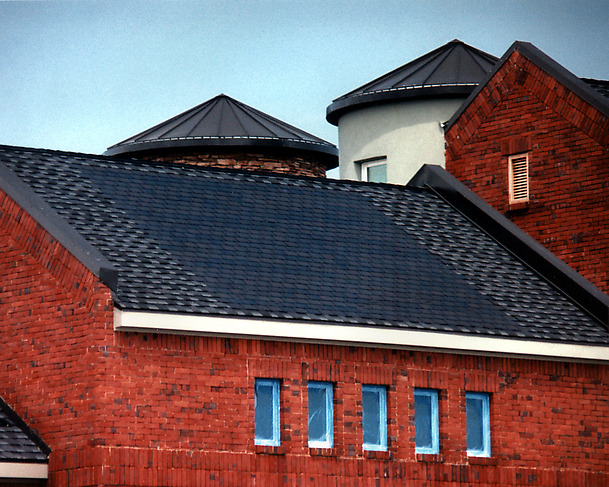Dear EarthTalk: I’m getting my roof redone and have heard about solar shingles. Are they available—and are they practical for the Northeast? —John Denson, Glastonbury, Conn. Echols Corn Popper Model 490 Manually. Solar shingles are photovoltaic cells designed to look like and integrate with conventional asphalt roof shingles. First commercially available in 2005, solar shingles were much more costly than traditional “bolt-on” photovoltaic panels, and thus were used mainly by those wanting to go solar but maintain a traditional roofline.
While the idea of solar shingles is attractive for the aesthetic, low-profile appearance, the real-world implementation has been slow. 6 Ways To Avoid Damaging Roofs When. • Ensure the company has installed solar on multiple. Dynisco Pt 482 Manual Treadmill. Not only do many installers perform this break incorrectly. Solar shingles or a.k.a solar tiles work like traditional solar panels. They use the sun as a power source to create electricity. Each of the solar shingles is comprised of photovoltaic cells. This type of technology has been around for a while and was at first used on satellites in space. The name photovoltaic truly tells what they do. Running the Numbers for Tesla’s Solar Roof: How Much Will It Cost You? 161; I’ve been getting a lot of questions about Tesla’s recently announced solar shingles.

But more recently solar shingles have become price-competitive with bolt-on panels, and are getting much more popular accordingly. Eco-conscious home and building owners might find solar shingles especially attractive when they are re-shingling anyway since the solar shingles also double as functional, protective and weatherproof roof shingles in their own right. Kenneth Copeland there. The biggest name in solar shingles is Dow’s Powerhouse line, which uses cutting edge Copper Indium Gallium Selenide solar cells (aka “thin-film” solar) to turn sunlight into electricity via a supplied inverter box. The Powerhouse shingles generate 12 watts per square foot and are “grid-tied,” meaning they’re designed for structures already connected to the power grid and can send excess power back to the grid. They are wireless, snap together and can be installed by regular roofing contractors just like (or alongside) conventional asphalt shingles (an electrician needs to set up the inverter box).
Dow reports that a typical residential cluster of 350 solar singles on a roof could slash one’s household electric bill by 40-60 percent. Such an installation can cost a homeowner over $20,000, but federal, state and local incentives can bring the cost to half that in some areas. Powerhouse shingles are currently available (from Dow-authorized contractors) in California, Colorado, Connecticut, Louisiana, Maryland, Massachusetts, Michigan, New York, North Carolina, Texas and Washington, D.C. Another leader in solar shingles is building products manufacturer CertainTeed. The company’s Apollo line of grid-tied monocrystalline solar shingles and roofing tiles offers efficiency similar to larger “bolt-on” photovoltaic arrays at around the same price (and incentives similar to those for Dow may also apply) but with less bulk: Each Apollo tile is less than an inch thick and will integrate with, replace, or lay on top of existing asphalt roof shingles or tiles and generate 12 watts of power per square foot.
